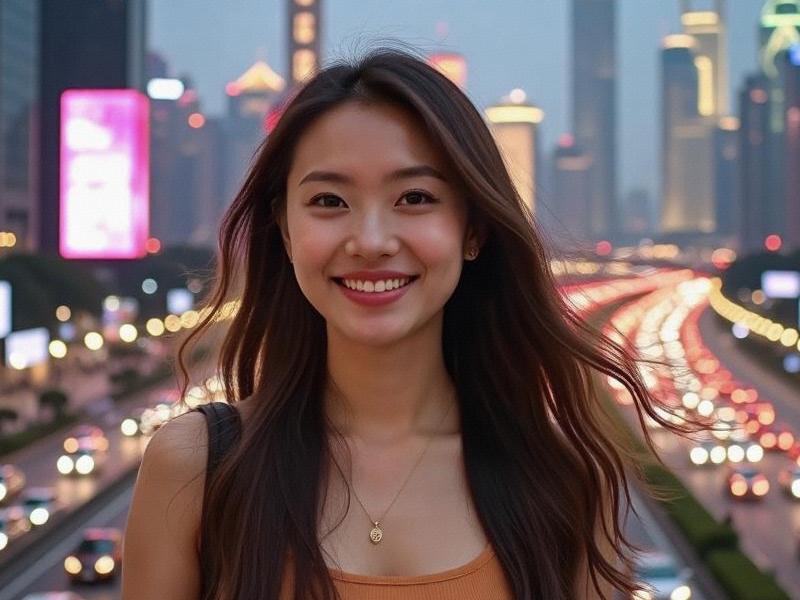This 2,800-word investigative feature examines how Shanghai women have developed a distinctive urban identity that blends Chinese cultural heritage with global modernity, creating a new paradigm of Asian femininity.

Shanghai's Daughters: The Evolution of a Modern Chinese Feminine Ideal
The golden hour light bathes the Huangpu River as investment banker Sophia Zhou exits her Lujiazui office tower, her tailored cheongsam dress subtly updated with contemporary cuts, her smartphone displaying real-time global market data. This image encapsulates the essence of today's Shanghai woman - a harmonious synthesis of cultural tradition and global sophistication that has become one of Asia's most studied social phenomena.
Historical Foundations: From Longtang to Skyscrapers
The Shanghai feminine archetype has evolved through four distinct historical phases:
1. The Treaty Port Era (1843-1949): Emergence of the "Modern Girl" (摩登女郎) blending qipao fashion with Western influences
2. The Socialist Period (1949-1978): Equal labor participation created China's first generation of female industrial managers
3. Reform and Opening (1978-2000): The rise of "Nü Qiang Ren" (女强人) female business pioneers
4. Global Shanghai (2000-present): Development of the bilingual, tech-savvy "SH Girl" subculture
Cultural anthropologist Dr. Li Mei observes: "Shanghai women developed unique survival skills managing extended families in the city's crowded longtang alleyway homes. These domestic negotiation skills translated remarkably well into modern business environments."
上海花千坊爱上海 Economic Powerhouses: By the Numbers
2025 statistical profile reveals:
- 63% of senior management positions in Shanghai held by women (national average: 39%)
- Women-founded startups account for 47% of Shanghai's unicorns
- Gender pay gap narrowed to 8% (vs 21% nationally)
- 82% control household investment decisions (national average: 57%)
Tech entrepreneur Jessica Wang notes: "My grandmother bargained in wet markets, my mother negotiated joint ventures, and I close Series D funding rounds - the Shanghainese woman's financial intelligence is both cultural and generational."
The Shanghai Aesthetic: Beauty Redefined
Distinctive style characteristics:
- "Effortless elegance" preferred over conspicuous consumption
上海花千坊龙凤 - Skincare rituals averaging 112 minutes daily (2.8× national average)
- Hybrid fashion combining local designers like Uma Wang with global luxury
- Cosmetic surgery rates 35% lower than Beijing counterparts
Digital Dominance: Shaping China's Online Culture
Shanghai women lead in:
- Lifestyle influencer economy (61% of top Chinese influencers based in Shanghai)
- ShanghaiStyle generates 5.4 billion annual engagements
- Pioneering sustainable fashion movements
Social Paradoxes: Tradition vs. Modernity
Contemporary challenges include:
上海品茶网 - Persistent "leftover women" stigma despite professional achievements
- Intensive parenting expectations ("education mother" phenomenon)
- Work-life balance pressures in high-stakes industries
Future Horizons: The Next Decade
Emerging trends suggest:
- Growth of women-focused professional networks like SH Lady Boss Club
- Average marriage age projected to reach 35.2 by 2030
- Increased representation in municipal governance (currently 28% female)
As Shanghai solidifies its position as Asia's premier global city, its women continue to redefine Chinese femininity - crafting an identity that honors heritage while embracing progress, proving that tradition and innovation can walk hand in hand along the Bund's storied waterfront.
Conclusion: The Shanghai Model
The Shanghai woman represents more than a regional stereotype - she embodies China's complex negotiation between cultural preservation and global integration. As the nation continues its rise, the world would do well to watch how these daughters of Shanghai navigate the challenges of modernity while maintaining their unique cultural identity.